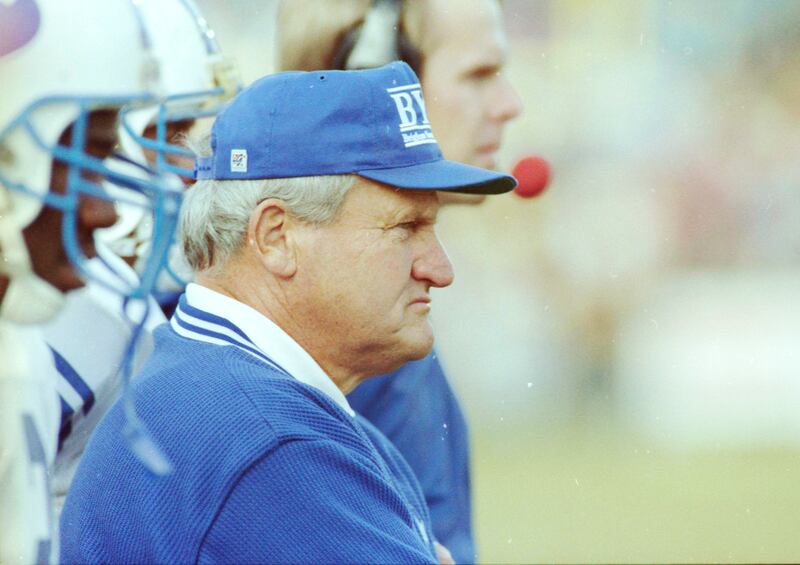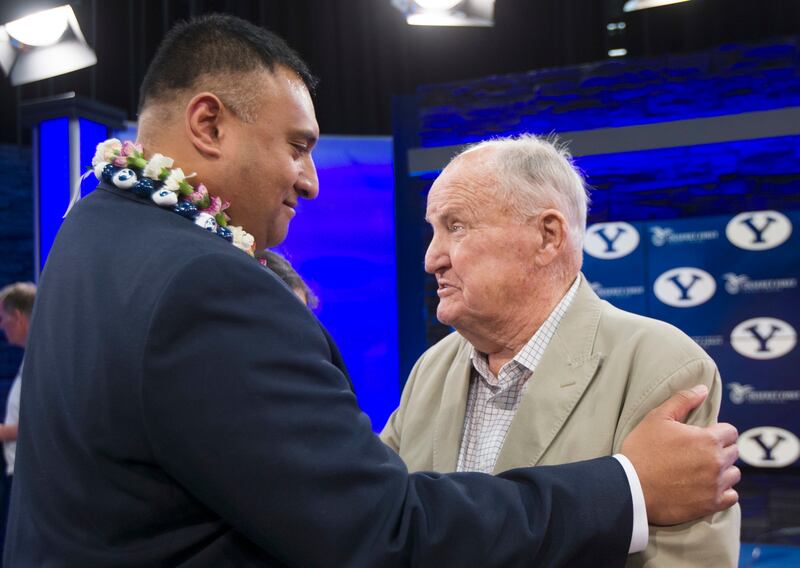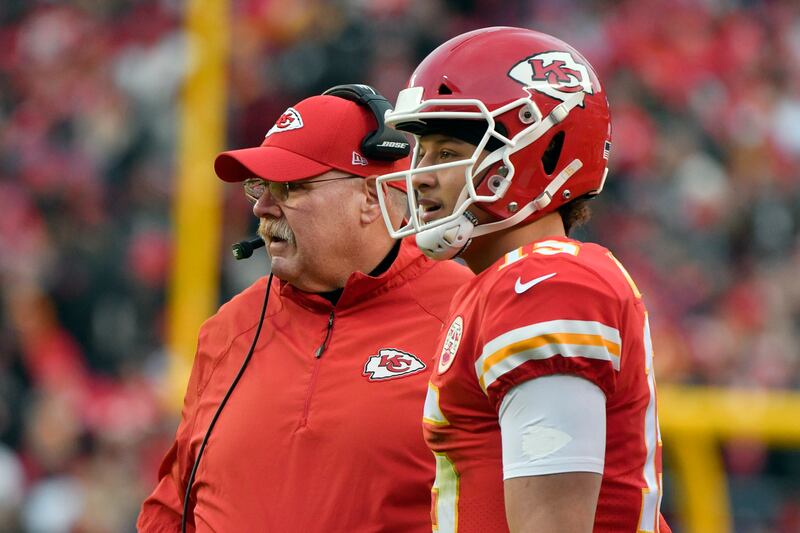PROVO — Andy Reid has the Kansas City Chiefs primed and ready for this weekend’s NFL divisional playoff matchup against the Indianapolis Colts on Saturday, and he is not shy in crediting the late LaVell Edwards as a foundation for the league’s most explosive offense.
Kansas City Star reporter Lynn Worthy offered a deep dive into the root of where the Chiefs' offense came from in a piece published this week titled “A perfect mesh: This Chiefs offense was three decades in the making.”
When you read it, you can understand what BYU coach Kalani Sitake, a disciple of Edwards, refers to when he says he wants his program to get back to playing BYU football.
“Unleash” things, Sitake says, and it is what he envisions when he counsels offensive coordinators that at BYU, the team will always be in the entertainment business in search of wins.
In Provo, it seems like the return to BYU’s roots is an ice field creeping, but it’s moving forward with the right parts in place if last month’s bowl win leads to positive steps.
The Star article actually is a salute to the coaching tree of Edwards and his ground-breaking passing concepts. Three of his quarterbacks (Ty Detmer, Jim McMahon and Robbie Bosco), none of whom started every game their freshman season, combined for 32,967 yards and 271 touchdowns.
The Chiefs' offense, a distant BYU relative, is on fire.
Wrote Worthy about the Kansas City offense: “Calling it high-powered is akin to saying a nuclear power plant could serve as a child’s night-light.”
The thing is, it would not be possible without a special talent at QB. Reid has that in Patrick Mahomes. He joins Peyton Manning as the only other NFL quarterback to pass for more than 5,000 yards and 50 touchdowns in a season. The Chiefs, as the article notes, are the first NFL team to score 26 or more points in every game, and scored 30 or more points 12 times.
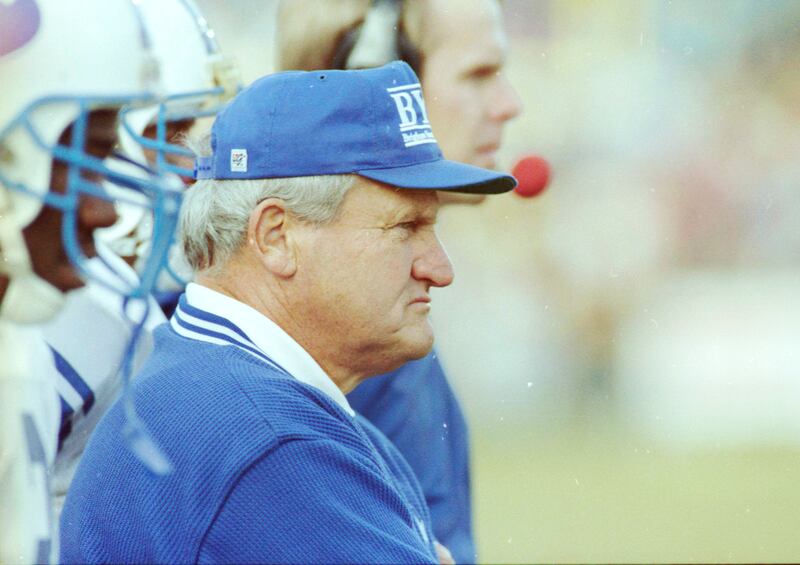
Reid’s explanation of the origins of KC’s offense quickly turns to Edwards, who he played for as an offensive lineman in the late ’70s. The story cites the records, the All-Americans, the Heisman Trophy winner and 19 conference titles.
The tale recounts Edwards' coaching tree that includes NFL coaches Brian Billick and Mike Holmgren. It discusses the base principles taken from legendary Paul Brown and its flexibility that has enabled many of its disciples to add their own twists, tweaks and names.
In one of these shootoffs, the piece describes in detail how the Air Raid offense, made famous at Texas Tech and Washington State by Mike Leach, is connected to Edwards.
Leach, a former BYU student and Pepperdine law student, joined a Texas high school coach named Hal Mumme in studying elements of BYU’s attack and deployed their ideas at Iowa Wesleyan, Valdosta State, Kentucky, Texas Tech and Washington State.
Both Leach and Mumme immersed themselves in studying BYU’s playbook in the mid-’80s. Mumme was on campus so much he was given keys to the Cougar football office so he could stay late into the night.
Mumme related to Worthy in the article, “I saw every offensive game film that LaVell Edwards ever coached at BYU, from 1987 until about 1997 — for about 10 years. I’d make at least one trip out there, usually two. LaVell was always really gracious and opened his doors.”
Mumme and Leach used Iowa Wesleyan and Valdosta State as laboratories for the Frankenstein offenses they cobbled from most of a decade of study. Their squad set 66 team records, 22 conference marks and seven national records at Valdosta, and at Iowa Wesleyan, their QBs passed for more than 11,000 yards in three seasons.
The Edwards touch was also carried out in another branch by his former offensive coordinator Norm Chow at North Carolina State, USC, UCLA and Utah. An offshoot of Chow hit the scene when his 1996 BYU quarterback Steve Sarkisian held head coaching jobs at Washington and USC after coaching with Chow.
Leach, Mumme and Chow have never neglected to credit LaVell Edwards for what they’ve managed to accomplish.
Neither has Andy Reid.
It was Reid who took concepts of what is described as the West Coast offense and tinkered with it with Brad Childress when both were coaching at Northern Arizona before either fiddled with NFL coaching.
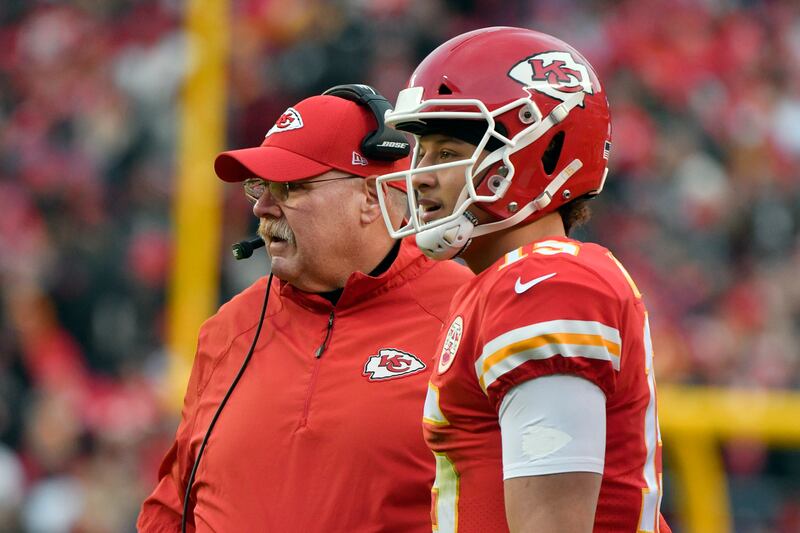
In Mahomes, Reid has a native Texan and student of the Air Raid when he played at Texas Tech. Mahomes understands the concepts Reid discusses in detail when the two talk offense, and that’s perhaps why the KC attack has taken yard production and points to such heights.
Reid has incorporated the RPO (run-pass option) into KC’s attack, giving it another dimension, adding to the lethal threat of Mahomes.
Regardless of name, style or author, yards and points are simply piling up for the Chiefs. Reid deserves credit for his ingenuity, teaching ability, acumen with details and practice execution.
Mahomes deserves credit for understanding the design and trigger pull.
Nothing happens without an idea, nothing gets done without the artist, and it always helps to have a nice canvas to spread the idea with the right brush.
Reid is a talented football artist, and his Chiefs are making history.


